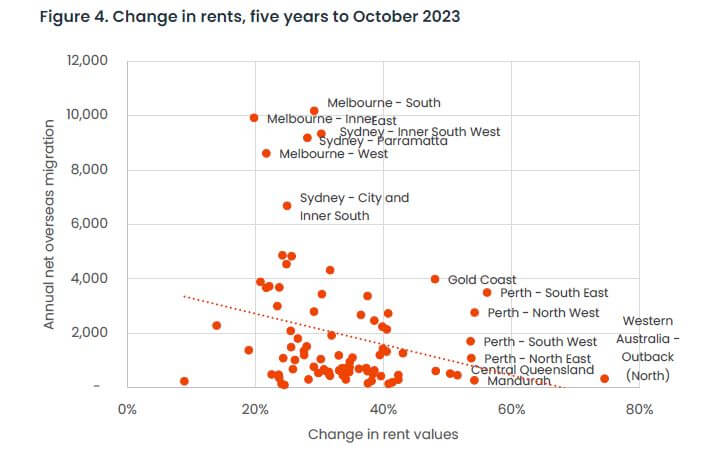At A Rich Life last month we saw how attitudes to migration can be seen as an epiphenomenon of housing affordability. When housing is unaffordable, it’s easy to blame the “extra” population.
But how significant is migration for housing prices?
The principal effect of immigration for housing costs is in rental prices. More than 90% of temporary migrants rent. Two-thirds of permanent migrants who’ve arrived in the past seven years rent also.
The areas with the highest migration are Sydney’s inner south-west, Sydney’s inner-south and centre, and Parramatta. In Melbourne, the highest number of migrants moved to the south, the west and the inner-east.
These areas have also seen substantial increases in rent over the past five years. However, because correlation does not equal causation, assessing the impact of immigration on rents is difficult.
The broader economic context of an area substantially affects rental prices as well. As we can see below, the booming resource sector has led the most significant localised rental cost increases over the past five years.

There are also many more factors specific to the 2019-2024 period than just migration. The lock-downs of 2021, which came after Australians should already have been vaccinated, reportedly cost the construction industry $1.4 billion. Overall, new dwelling construction decreased by 40% from 1 July 2019 to 30 June 2021.
In addition, since the lock-downs, Australians have become less willing to share their homes with others, with the average household is now just 2.5 persons, a historic low. This of course drives up housing demand as well.
Since then, even with record high prices we have not seen a corresponding up-tick in building approvals, partially due to increased NIMBYism from local councils.
In sum, while migration certainly plays a role in price-setting, there are many ways out of the housing affordability crisis.
Thumbnail image courtesy of @teckhonc via Unsplash.